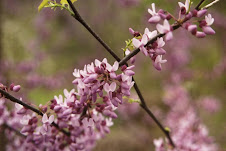Written By: Tom DiGangi, Jr.
Photos By: Laura Knott & Tom DiGangi, Jr.
Each autumn, friends and family respond with quizzical looks and surprised comment when we report on the garden’s output in October, November and – yes, sometimes – December. When most folks are raking leaves and tossing rotting jack-o-lanterns, we are harvesting greens, peppers, root vegetables, and an assortment of herbs.
What then is the secret to a great fall harvest, you may ask? Actually, it’s at least three secrets.
First, the gardener must be lazy or preoccupied, and fail to harvest in summer. See previous blog posts, such as this post , which shall serve as testimony to the truism about us being lazy or preoccupied. This year, we simply didn’t harvest our fennel bulbs when they were ready in July – preoccupied I suppose. Maybe we were too busy watching the Philadelphia Phillies magical 102 win regular season. Then nature took its course. The large stalks began to die in the heat of summer, and all hope was lost for a harvest. Yet we let the dying plants just stay in place – lazy I suppose. Don’t repeat this to the kids, but our inaction was ultimately rewarded. Now, young bright green fennel plants are emerging around the brown and brittle stalks.

Unfortunately, this is not metaphor for the Phillies season, as they failed to sprout anew in the playoffs, instead just dying-off after the regular season. But, at least I have fennel for football season. Sunday football will feature whey-fed pork sausage sandwiches (from our friends at Bobolink farm) with sautéed fennel. I can taste it already. That sandwich could benefit from some peppers. But, peppers - you say - are summer fruits. They can’t join the party. This brings us to secret number two.
Invest in a fabric “greenhouse” or plastic “coldframe” to keep your summer plants going into winter. The theory is that a transparent cover over your planting beds allows sunlight in to warm the soil during the day and traps warm air throughout the night. If the greenhouse is too great an investment, then pick-up some cheap cloth row covers that you use to literally cover your crops (i.e., a sleeping bag for plants). You can remove them in the morning to allow direct sunlight and replace them in the evening to keep off the frost. They won’t work too long into the cold months, but will definitely extend the growing season. With row covers on, chances are the pepper plants, like the Giant Marconi seen here,

will last longer than my beloved Philadelphia Eagles will remain in the NFL playoff hunt. However, defeat in sports is much easier to digest when followed by a sausage, fennel and pepper sandwich.
Let’s say that you don’t have the patience for row cover management, or you're just not that into peppers. Then, focus on secret number three... next year.
Plant a garden that produces more than just summer season favorites like tomatoes, eggplant or cucumbers. Add in cool weather crops like celery root, fennel, horseradish, leeks, peppers, pumpkins, spinach, swiss chard and turnips. In our garden, these are all still going strong this fall. Some of these crops can be planted in spring for an early summer harvest, and may produce a second harvest in the fall. The fennel and swiss chard did just that for us this year. The multi-season life of chard is evident in this photo.

New crisp leaves appear from the tops of the roots, now revealed from the snipping of leaves from those roots all year long.
Come to think of it, that swiss chard sautéed in a bit of garlic and olive oil would go really well with the sausage, fennel and peppers. Now, if we could figure out how to grow beer, then we would really have something to make us feel better about Philadelphia sports this autumn.















.jpeg)



